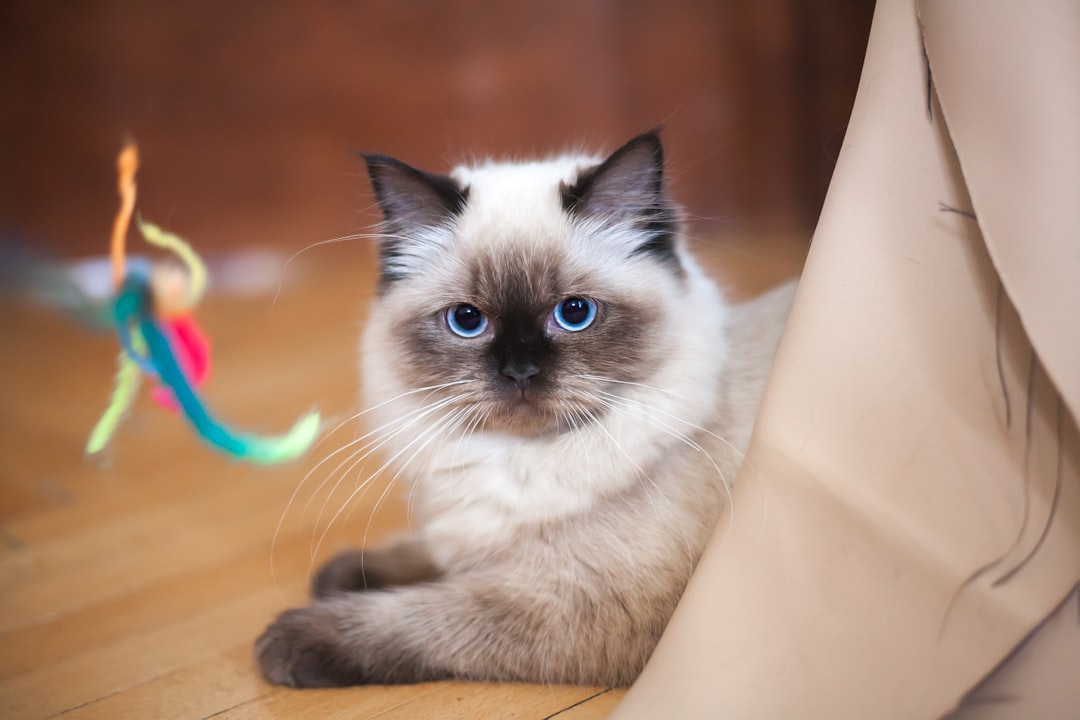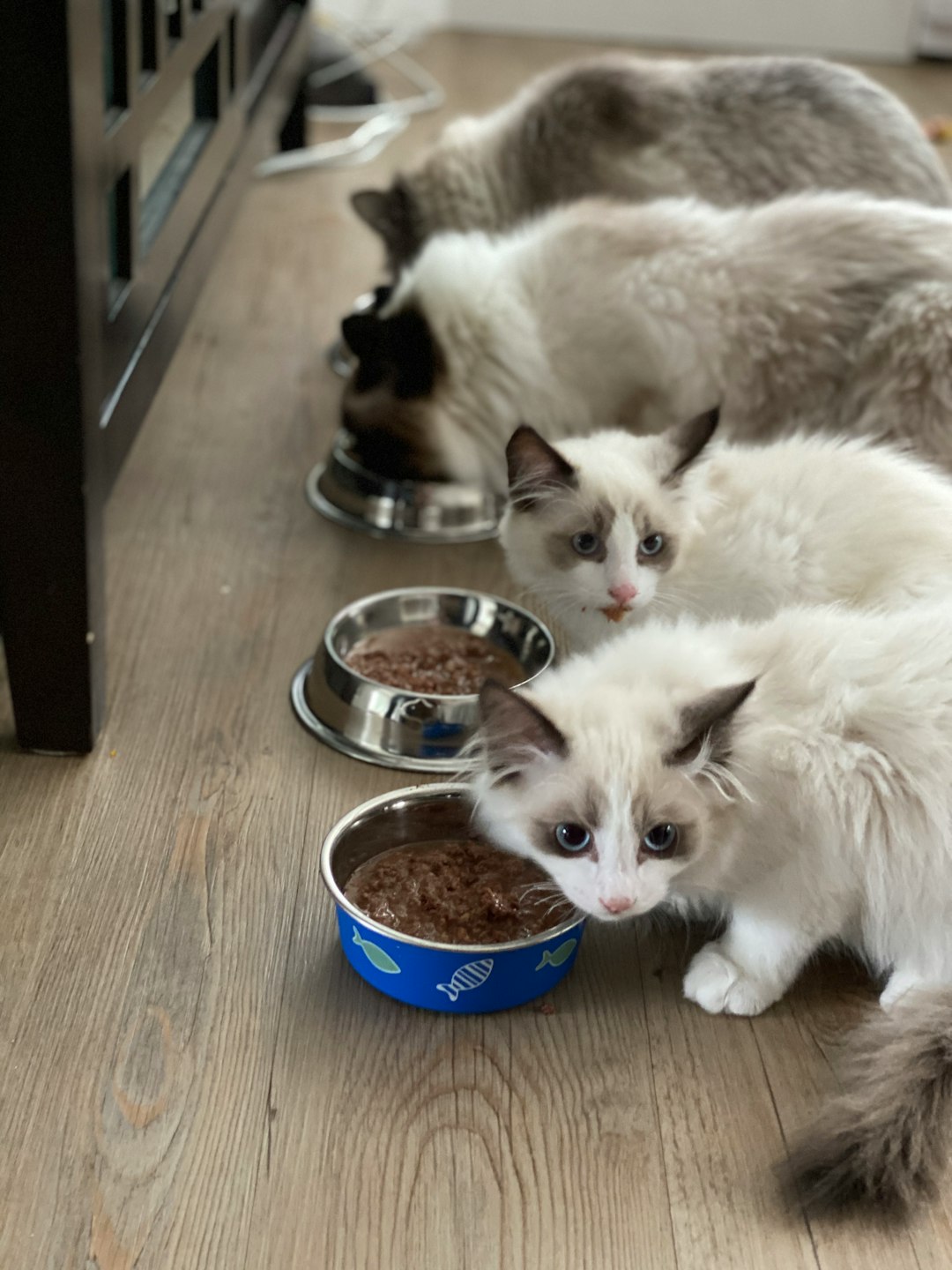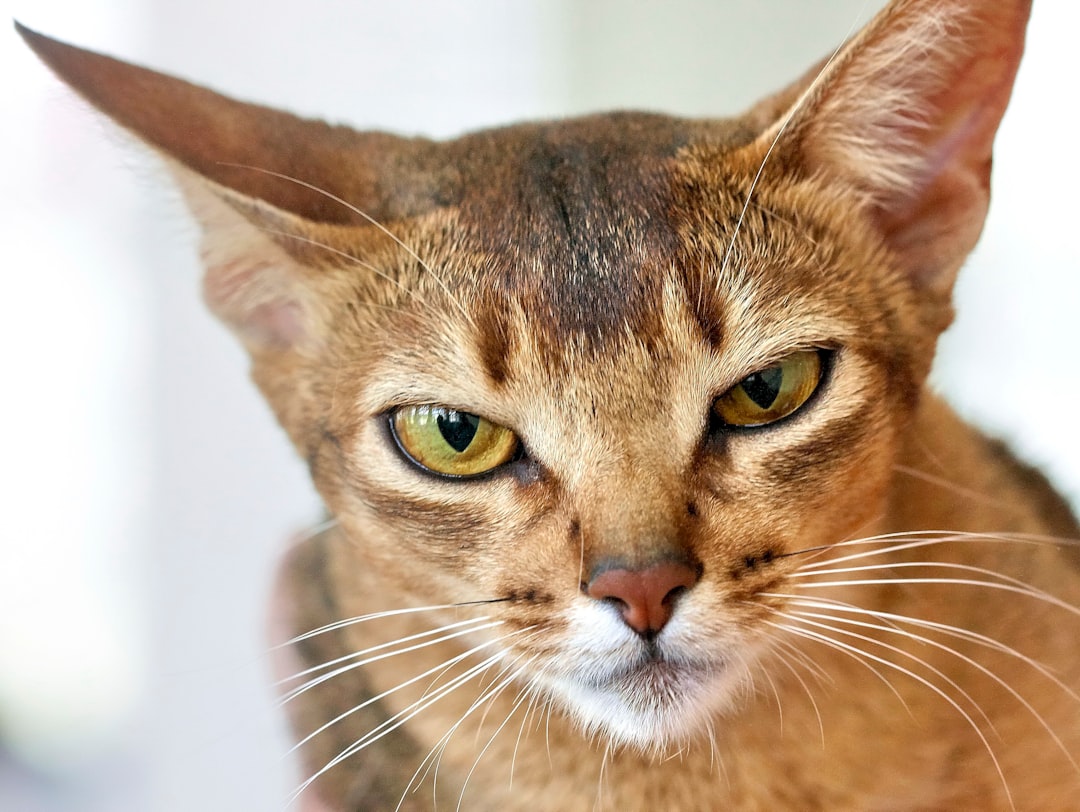In the quest to provide our feline friends with the best nutrition possible, pet owners often find themselves weighing the options available on the market. One increasingly popular choice is freeze-dried cat treats, which promise to deliver superior nutrition while maintaining the flavors that cats adore. Exploring the science behind freeze-drying reveals not only the advantages of these treats but also offers insights into their nutritional benefits. From understanding the freeze-drying process to comparing these innovative treats with conventional options, this post will guide you through the essentials. Additionally, we’ll help you navigate the various types of freeze-dried treats available and even share tips on creating homemade versions for your beloved pet. So, if you’re curious about how freeze-dried cat treats stack up against traditional options, keep reading to discover more!
Understanding Freeze-Drying
What is Freeze-Drying?
Freeze-drying is a preservation technique that involves removing the moisture from food products to enhance their shelf life while retaining essential nutrients, flavors, and textures. Unlike traditional drying methods that can often degrade nutritional quality and taste, freeze-drying maintains the integrity of the original ingredients. This process is particularly effective for pet treats, providing a healthy and flavorful option for pet owners looking to pamper their furry companions.
The Freeze-Drying Process
The freeze-drying process involves several key steps that contribute to the unique benefits of freeze-dried cat treats. Below is a breakdown of the method:
- Freezing: The raw ingredients are initially frozen at extremely low temperatures, which prevents the formation of ice crystals that could damage cell structure.
- Vacuum Application: Once frozen, the food is placed in a vacuum chamber. This step allows the ice to sublimate directly from the solid state to vapor, avoiding the liquid phase.
- Drying: Heat is applied carefully to facilitate sublimation and remove moisture, resulting in dry, lightweight products.
- Sealing: Finally, the freeze-dried cat treats are sealed in airtight packaging to protect them from light and moisture, ensuring they remain fresh for longer periods.
Benefits of Freeze-Drying for Pet Treats
The freeze-drying process offers numerous advantages for freeze-dried cat treats, making them a popular choice for pet owners:
| Benefit | Description |
|---|---|
| Nutrient Retention | Maintains vitamins and minerals that are sensitive to heat. |
| Intense Flavor | Concentrates natural flavors, making it more appealing to cats. |
| Lightweight & Portable | Easy to store and carry, perfect for travel or hiking adventures. |
| Long Shelf Life | Can last for months or even years without refrigeration. |
| No Preservatives | Contains no artificial additives or preservatives, promoting health. |
By understanding the ins and outs of freeze-drying, pet owners can better appreciate the nutritional prowess of freeze-dried cat treats for their beloved pets. This technique not only enhances the longevity of the treats but also ensures that our feline friends receive a nutritious and tasty snack.
Nutritional Benefits of Freeze-Dried Cat Treats
When it comes to your feline’s diet, choosing the right treats can make a significant difference in their overall health. The nutritional benefits of these specialized snacks are noteworthy, providing your cat with essential components to thrive. Here’s an in-depth look at the advantages:
High Protein Content
One of the most significant advantages of these treats is their high protein content. Cats are obligate carnivores, which means they thrive on a diet rich in animal protein. The freeze-drying process concentrates protein levels, ensuring your kitty receives:
- Lean Protein: This helps maintain muscle mass and supports growth and development.
- Amino Acids: Essential for various bodily functions, including tissue repair and immune system support.
For instance, a typical serving of freeze-dried chicken can contain over 90% protein, while conventional treats often include fillers that dilute their nutritional value.
Retained Nutrients and Enzymes
The freeze-drying process preserves not just protein but many essential nutrients and enzymes crucial for your cat’s health. This method involves removing moisture without heating, which leads to the following benefits:
| Nutrient | Benefit |
|---|---|
| Vitamins | Support eyesight, skin health, and immune function. |
| Omega Fatty Acids | Promote healthy coat and enhanced cognitive function. |
| Probiotics | Aid in digestive health and boost gut flora. |
The retention of these critical components means that your pet is getting the most out of their treats, helping to keep them healthy and active.
Natural Flavor and Texture
Another appealing aspect is that these treats maintain their natural flavor and texture. Cats are known for their discerning tastes, and the freeze-drying method enhances:
- Flavor Intensity: The natural taste is preserved, making these treats more enticing for your feline friend.
- Crunchy Texture: Many cats enjoy a crunchy snack, which can also promote dental health by helping to reduce plaque buildup.
This combination of taste and texture not only satisfies your cat’s palate but also encourages them to engage more actively during feeding time.
Incorporating these specialized snacks into your cat’s diet can enhance their nutrition while providing a delicious, satisfying treat.
Types of Freeze-Dried Cat Treats
When it comes to selecting snacks for your feline friend, freeze-dried cat treats offer a wide variety of options that cater to different tastes and dietary needs. This section will delve into the various types of these uniquely preserved snacks, ensuring that you find the perfect fit for your cat.
Meat-Based Treats
Meat-based treats are a popular choice among cat owners due to their high protein content and natural flavor. These treats are primarily derived from various sources, including:
- Chicken: Rich in protein and widely liked by cats. It also contains essential amino acids that support muscle health.
- Turkey: A leaner alternative that is also easy to digest, making it suitable for cats with sensitive stomachs.
- Beef: Offers a robust flavor that many cats find irresistible, packed with nutrients like iron and zinc.
Fish-Based Treats
Fish-based options are not only tasty for cats but also come with their own set of health benefits. Some common types include:
- Salmon: Known for its omega-3 fatty acids, which promote a healthy coat and skin.
- Tuna: Extremely palatable, but should be given in moderation due to its higher mercury levels.
- Mackerel: A great source of protein and healthy fats, offering additional nutritional support.
Vegetable and Grain Options
While cats are obligate carnivores, some blends include vegetables and grains to provide added nutrients, especially for those who might be more finicky eaters. These treats can include:
- Pumpkin: Excellent for digestion and rich in fiber, supporting overall gut health.
- Peas: High in protein and beneficial vitamins, offering a plant-based protein alternative.
- Brown Rice: Provides a carbohydrate source that is gentle on the stomach and easily digestible.
In summary, there is a diverse range of freeze-dried cat treats available that cater to different dietary preferences. Understanding these options will help you make informed decisions for your cat’s snack time, ensuring they receive not only a delicious treat but also beneficial nutrition.
Comparing Freeze-Dried Treats with Conventional Options
When it comes to choosing cat treats, pet owners often find themselves weighing the benefits of freeze-dried cat treats against traditional options. Each type has its own unique set of advantages and disadvantages. Below, we will delve into key categories to help you make an informed decision.
Nutritional Comparison
One of the primary factors to consider is the nutritional content. Here’s a breakdown of how freeze-dried cat treats stack up against conventional options:
| Nutrient | Freeze-Dried Treats | Conventional Treats |
|---|---|---|
| Protein Content | Higher; often includes real meat | Varies; may contain low-quality fillers |
| Preservatives | Minimal or none | Often contains chemical preservatives |
| Vitamins & Minerals | Retained during freeze-drying | May lose potency due to cooking |
| Moisture Content | Low moisture, ensuring a concentrated form | Higher moisture levels, diluting nutrients |
Shelf Life and Storage
The storage requirements and shelf life of treats can significantly affect their convenience:
- Freeze-Dried Treats:
- Shelf life: Typically lasts 1-2 years when stored in a cool, dry place.
- Storage: Lightweight and requires no refrigeration; can be stored easily in bags or containers.
- Conventional Treats:
- Shelf life: Generally shorter, around 6 months to 1 year, depending on preservatives and packaging.
- Storage: May require specialized storage conditions to maintain freshness.
Cost Effectiveness
While cost is always a relevant consideration, it’s essential to weigh it against the benefits:
- Freeze-Dried Treats:
- Generally more expensive per ounce, reflecting the quality of ingredients and preservation methods.
- Higher protein content may contribute to less waste, as cats tend to eat what’s beneficial for them.
- Conventional Treats:
- Typically less expensive, making them accessible for regular use.
- The lower price may sometimes come at the cost of quality and nutritional value.
In summary, while freeze-dried cat treats may require a higher initial investment, their nutritional benefits, longer shelf life, and overall value may offer a healthier option for your beloved pet. Understanding these distinctions helps pet owners choose the best treat tailored to their cat’s needs.
How to Choose the Right Freeze-Dried Treats for Your Cat
When it comes to selecting the ideal freeze-dried cat treats for your feline friend, several factors come into play. Cats, like humans, have unique dietary needs and preferences, making it essential to adopt a thoughtful approach. Here’s how to ensure your choice is informed and appropriate.
Reading Labels and Ingredients
Understanding the ingredients in freeze-dried cat treats is crucial for a healthy diet. Here are some pointers:
- Protein Source: Look for high-quality protein as the first ingredient. Common sources include chicken, fish, or beef.
- Preservatives: Avoid treats with artificial preservatives or fillers. Opt for natural ingredients where possible.
- Nutritional Information: Check the guaranteed analysis section for information on protein, fat, fiber, and moisture content.
| Ingredient Type | What to Look For | What to Avoid |
|---|---|---|
| Protein | High-quality animal protein | By-products |
| Carbohydrates | Whole grains or vegetables | Fillers like corn or soy |
| Preservatives | Natural options | Artificial preservatives |
Understanding Your Cat’s Dietary Needs
Every cat’s dietary requirements differ based on age, activity level, and health status. Consider the following:
- Age: Kittens require more protein and fat, while senior cats should have diets lower in calories.
- Health Conditions: If your cat is overweight or has health conditions like diabetes, seek treats with lower calories and specific nutrients.
- Activity Level: Active cats can benefit from higher protein treats to support their energy needs.
Consulting with a Veterinarian
To ensure you’re making the best choice:
- Professional Guidance: Consult with your veterinarian to discuss your cat’s specific nutritional needs. They can provide personalized recommendations based on your cat’s health.
- Trial and Observation: After choosing a treat, observe how your cat reacts to it. Allergies or digestive issues might warrant a reassessment of your choice.
Choosing the right freeze-dried cat treats involves careful consideration of ingredients, nutritional needs, and professional advice. By following these steps, you can find delicious and nutritious options that will keep your feline companion happy and healthy.
Homemade Freeze-Dried Cat Treats
Creating homemade freeze-dried options for your feline friend not only guarantees freshness but also allows you to control the ingredients, ensuring optimal nutrition. Let’s explore how you can make these delightful snacks yourself.
Simple Recipes for Freeze-Drying at Home
To prepare your own freeze-dried cat treats, follow these simple recipes:
- Chicken Treats
- Ingredients: Fresh chicken breast.
- Instructions:
- Cook the chicken breast until thoroughly done.
- Cut into small, bite-sized pieces.
- Place the pieces in a freeze-dryer for 24-36 hours until completely dry.
- Fish Treats
- Ingredients: Salmon or tuna.
- Instructions:
- Bake or steam the fish fillet.
- Remove any bones and cut into manageable portions.
- Freeze-dry the pieces until they are crispy and lightweight.
- Turkey Treats
- Ingredients: Ground turkey.
- Instructions:
- Cook the ground turkey and drain excess fat.
- Spread it out evenly on the freeze-drying tray.
- Freeze-dry for approximately 24 hours.
Safety Precautions
When preparing homemade treats, it’s crucial to prioritize safety:
- Ingredient Quality: Use fresh, high-quality ingredients; avoid using any preservatives or additives.
- Cook Thoroughly: Always cook meat products to safe temperatures to eliminate harmful bacteria.
- Clean Equipment: Ensure your freeze-dryer and utensils are thoroughly cleaned before and after preparation to prevent contamination.
Storing Homemade Treats
Proper storage extends the shelf life of your homemade goodies:
- Airtight Containers: Store the treats in airtight jars or vacuum-sealed bags to keep moisture out.
- Cool, Dark Place: Keep your containers in a cool and dark area, away from direct sunlight to maintain quality.
- Label and Date: Always label your storage containers with the contents and prepare date, helping you keep track of freshness.
By making freeze-dried treats at home, you not only save money but also provide your cat with delicious snacks packed with nutrition they’re sure to love.
Frequently Asked Questions
What are freeze-dried cat treats and how are they made?
Freeze-dried cat treats are specially prepared snacks designed to maintain the nutritional integrity of ingredients while removing moisture. The process involves flash-freezing fresh food to lock in its original nutrients, followed by a deep vacuum process that slowly evaporates the ice, transforming the food into a lightweight, shelf-stable treat. This method preserves flavors and nutrients, making them enticing and beneficial for your feline friend.
What are the nutritional benefits of freeze-dried cat treats?
Freeze-dried cat treats are often made from high-quality ingredients like real meat, fish, or fruits, providing a concentrated source of proteins, vitamins, and minerals. Unlike traditional treats, freeze-drying retains essential nutrients that might be diminished during cooking processes. These treats can support a cat’s overall health, promote a healthy coat, boost energy levels, and even aid in dental health due to their crunchy texture.
How should freeze-dried cat treats be stored, and do they have a shelf life?
Freeze-dried cat treats should be stored in a cool, dry place, ideally in an airtight container to preserve their freshness and prevent moisture from impacting their texture and flavor. When stored properly, they can have a shelf life of 1 to 2 years, but it’s essential to check the packaging for specific expiration dates. Always keep treats away from direct sunlight and humidity to maintain their quality.
Can all cats eat freeze-dried cat treats, or are there any restrictions?
While most cats can safely enjoy freeze-dried cat treats, there may be exceptions for those with specific dietary restrictions or allergies. Always check the ingredient list for potential allergens and consult with your veterinarian, especially if your cat has health concerns or is on a specialized diet. Moderation is key, as treats should only make up a small portion of your cat’s overall diet.



